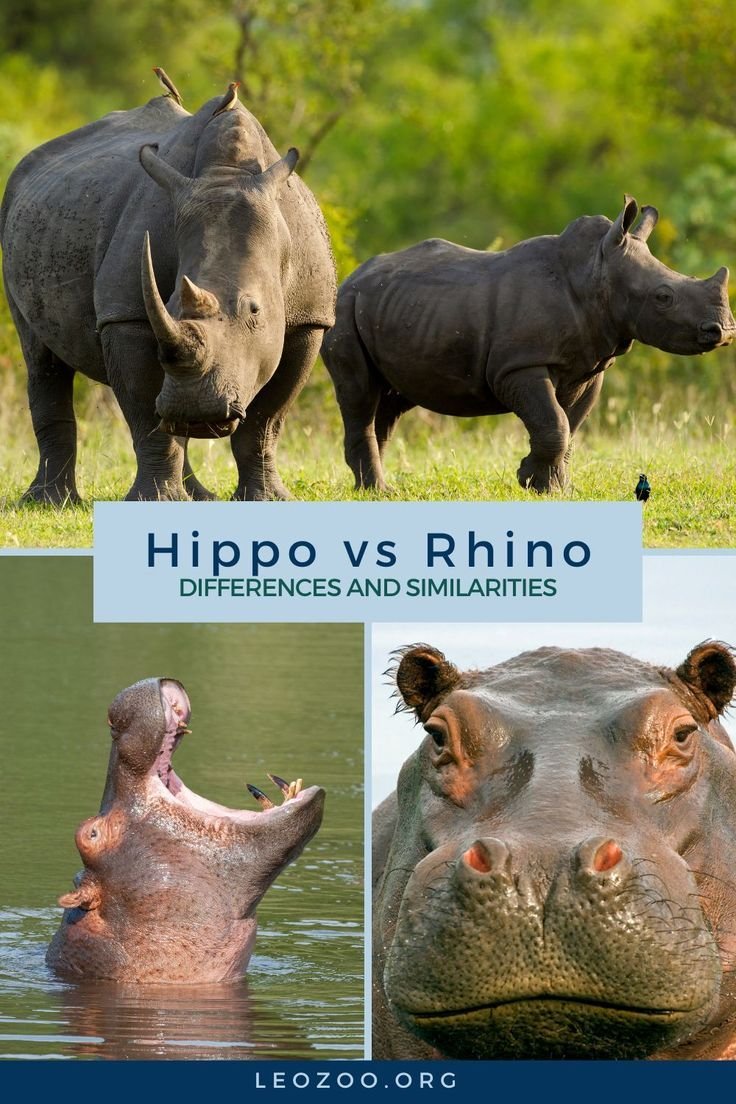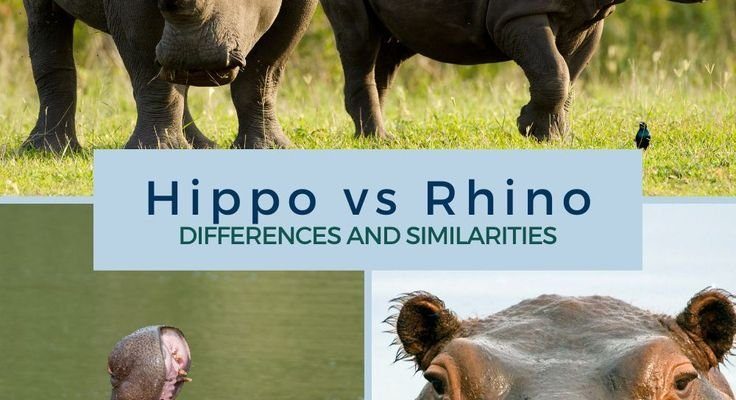
You might be wondering, “What makes these animals similar to hippos?” Well, it could be their shape, size, or even their lifestyle. By learning about these similarities and differences, you can gain a greater appreciation for the diversity of life on our planet. So, grab a cup of coffee, sit back, and let’s explore the 10 animals that bear a resemblance to the hippopotamus.
1. Pygmy Hippopotamus
Let’s kick things off with the most obvious contender—the *Pygmy Hippopotamus*. This smaller cousin of the common hippo weighs a mere 400 to 600 pounds, which is significantly less than its larger counterpart. This little guy has a compact body, shorter legs, and a more delicate appearance.
What sets the pygmy hippo apart? For starters, their skin is a bit more wrinkled, and they tend to be more shy and solitary. While common hippos are known for their social behavior, often seen in groups called pods, pygmy hippos prefer a quieter life, usually roaming alone or with one other companion. They’re also more adapted to forested habitats rather than the open savannas where their larger relatives thrive.
One thing to note is that pygmy hippos are critically endangered due to habitat loss and poaching. So, if you see one at a zoo or sanctuary, consider yourself lucky! You’re witnessing a truly rare species that shares some hippo-like characteristics but is dramatically different in its lifestyle and size.
2. Capybara
Next up is the *Capybara*, often dubbed the “largest rodent in the world.” These social creatures can weigh up to 150 pounds and often live near water. You might see them lounging in the shallows, much like hippos do.
However, the capybara is quite different in terms of structure and behavior. Their bodies are elongated, and they have a more fur-covered appearance. Unlike hippos, who have smooth skin, capybaras sport a shaggy coat. They also thrive in groups, forming herds of up to 20 individuals. This social trait contrasts with the more solitary nature of pygmy hippos and highlights the variety in animal relationships.
Capybaras are surprisingly friendly and often share their habitat with other animals, including birds and monkeys. This communal approach helps them stay safe from predators while enjoying a peaceful existence. So, if you’re ever near a river, keep an eye out for these friendly giants!
3. Common Warthog
The *Common Warthog* may not initially remind you of a hippo, but they share some fascinating similarities. With their rhinoceros-like appearance, these creatures weigh between 120 to 250 pounds and have a stocky build. Much like hippos, warthogs have a pronounced face and tusks that add to their rugged look.
However, here’s where things get interesting. Warthogs typically inhabit savannas and open grasslands, unlike hippos, which prefer wet environments. Warthogs are also quite agile, often seen running swiftly on their knobby knees. They use their tusks primarily for defense and digging, which is a stark contrast to the hippo’s hefty weight and near weightlessness in water.
So, while they might both have a tough exterior, warthogs and hippos live very different lives. Watching a warthog trot across the plains is a sight to behold, as they embody a different kind of grace and resilience.
4. Manatee
You’ve probably heard of manatees, often referred to as “sea cows.” These gentle giants share a few similarities with hippos, especially because both animals are part of the same order, Sirenia. Manatees can weigh up to 1,300 pounds and have a round, large body that resembles that of a hippo.
However, the biggest difference comes from their habitat. Manatees are aquatic mammals that dwell in warm, shallow waters, munching on seagrass. They’re herbivores just like hippos, which also have a plant-based diet, but they’re adapted to a fully aquatic lifestyle that includes swimming rather than wallowing in mud.
Both creatures are known for being slow and gentle, often described as peaceful. But if you ever spot a manatee, you’ll see they’re much more streamlined for life in the water, with a paddle-shaped tail designed for efficient swimming.
5. River Dolphin
If you find yourself near a river, keep an eye out for the *River Dolphin*. These charismatic creatures have a long, slender body that’s distinctly different from the bulky hippo. River dolphins can grow up to 8.5 feet long, but their sleek form allows them to navigate river systems with ease.
Though dolphins and hippos are different in appearance, they share a common ancestor, which explains their surprising kinship. River dolphins are highly social and often communicate with each other through clicks and whistles, while hippos, although vocal, communicate more through grunts and bellows.
One of the most striking distinctions is their habitat. While hippos love to lounge in shallow waters, river dolphins prefer the open waters of rivers, where they hunt fish and other aquatic creatures. Both animals remind us of the incredible diversity of life that thrives in and around water.
6. Tapir
The *Tapir* might be one of the more unusual entries on this list. This herbivorous mammal has a stout body and a unique nose that resembles a small trunk, making it quite distinct. Weighing between 400 to 900 pounds, tapirs have a rounded shape that can draw comparisons to hippos.
You’ll most commonly find tapirs in tropical forests and grasslands, where they wanders between trees and water sources. While hippos are adapted to life in rivers, tapirs are adept at traversing land and water, often submerged in rivers to escape predators.
Despite their differences, both animals share a love for foraging. While hippos graze on grasses, tapirs munch on leaves, fruit, and aquatic plants. They’re also known to be quite shy, preferring to retreat into the underbrush when approached.
7. Nile Crocodile
You might not think of the *Nile Crocodile* as a hippo lookalike, but these reptiles are often found in similar habitats. Nile crocodiles can grow up to 16 feet long and weigh as much as 1,600 pounds, making them quite formidable.
One way they relate to hippos is through their shared environment; both are commonly spotted in African rivers and lakes. However, their behaviors are worlds apart. While hippos are known for their sociable nature, Nile crocodiles are solitary hunters, often lurking beneath the water’s surface, waiting patiently for their next meal.
Both creatures have thick skin, but while hippos have smooth skin, crocodiles are covered in tough, armored scales. Here’s the thing: while hippos are primarily herbivores, crocodiles are carnivores, making for a stark comparison despite their shared living space.
8. Okapi
The *Okapi* might be the most surprising addition to this list. With its zebra-like stripes and horse-like body, the okapi doesn’t resemble the hippo at first glance. However, both animals are part of the same family and share similar habitats, primarily found in the dense forests of the Congo.
Okapis are generally smaller, weighing between 600 to 1,200 pounds. They’re known for their long necks and large ears, which help them navigate through the thick foliage. While hippos enjoy aquatic environments, okapis prefer the tranquility of the forest floor, munching on leaves and shoots.
Despite their differences in appearance and habitat, both animals are unique in their own right and play crucial roles in their ecosystems. Plus, their distinct features make them stand out in the animal kingdom!
9. Walrus
The *Walrus* clocks in as another interesting comparison. With their massive size and tusks, walruses can weigh up to 2,000 pounds. While they’re primarily found in the Arctic, their blubbery bodies and social behaviors can draw parallels to hippos lounging in the sun.
Walruses thrive in cold waters, spending plenty of time on ice floes and rocky shores. Their sociable nature leads them to gather in large groups, similar to how hippos form pods. However, their tusks set them apart, making them look quite different from the hefty hippo.
Both creatures share a love for the water but have adapted to vastly different climates and diets. Hippos graze on grass, while walruses dive deep for clams and other seafood. This variation showcases the incredible adaptability of life on Earth.
10. Brown Bear
Lastly, let’s chat about the *Brown Bear*. Although they may seem completely different from hippos, they share some similarities in size and habitat. Adult brown bears can weigh up to 1,500 pounds, making them quite hefty, much like their hippo cousins.
Brown bears are known for their powerful build and love of water. They often fish in rivers and swim, similar to how hippos enjoy wallowing and submerging. However, while hippos are herbivores, brown bears are omnivores, diving into a varied diet that includes plants, fish, and small mammals.
While their lifestyles differ, both animals show the importance of having access to water and land for survival. It’s fascinating how different environments can shape animal behaviors and feeding habits.
So, there you have it! Ten animals that share similarities with the hippopotamus, each with its own unique traits and behaviors. Whether it’s the pygmy hippo’s small stature or the capybara’s community spirit, these creatures remind us of the incredible diversity in the animal kingdom.
Understanding how these animals relate to one another, and how they differ, helps us appreciate the complexity of life on our planet. Next time you think of a hippo, you can’t help but imagine the fascinating connections it has with other animals. So, keep exploring and discovering the wonders of wildlife! There’s always something new to learn, just waiting for you around the bend.

